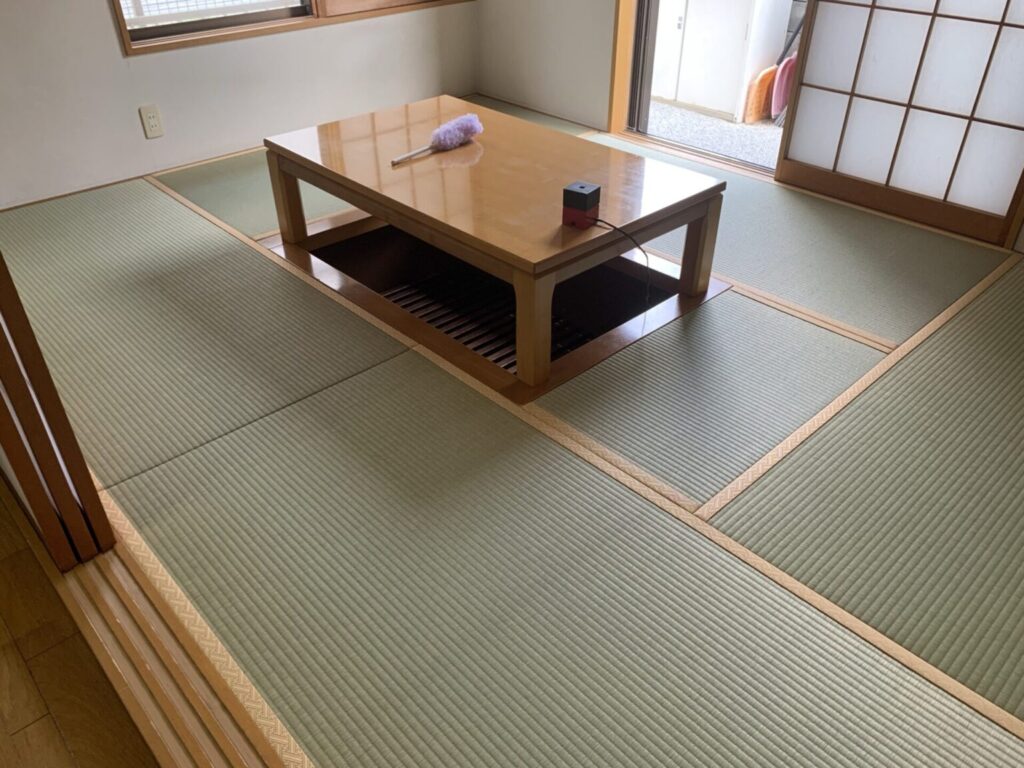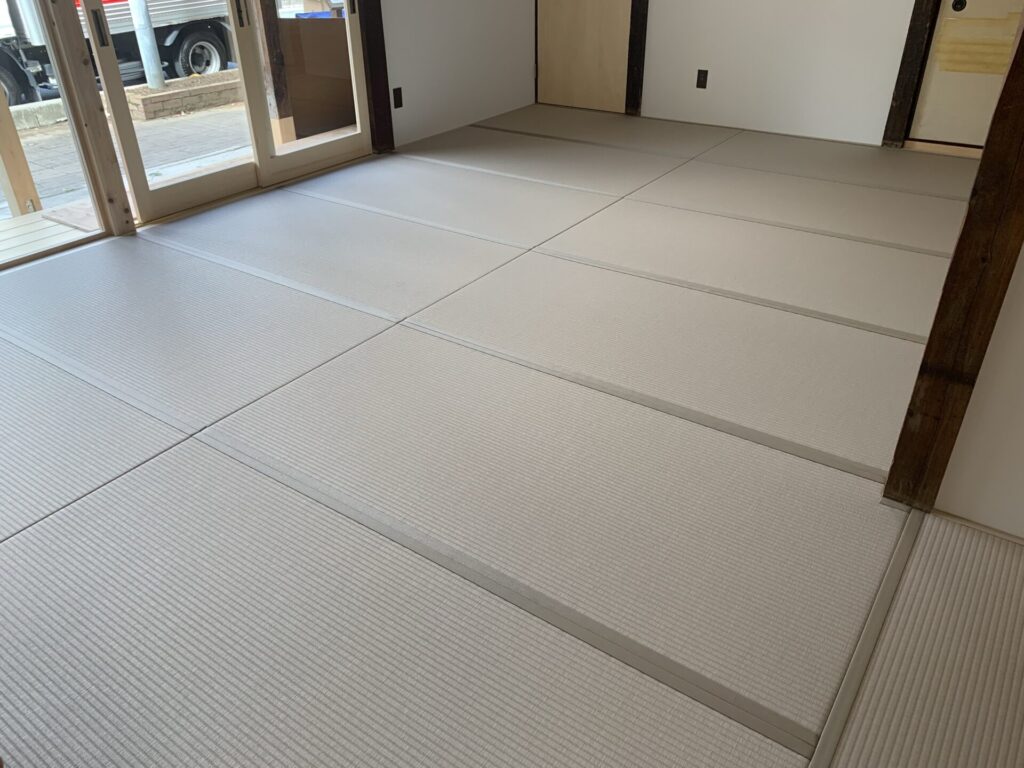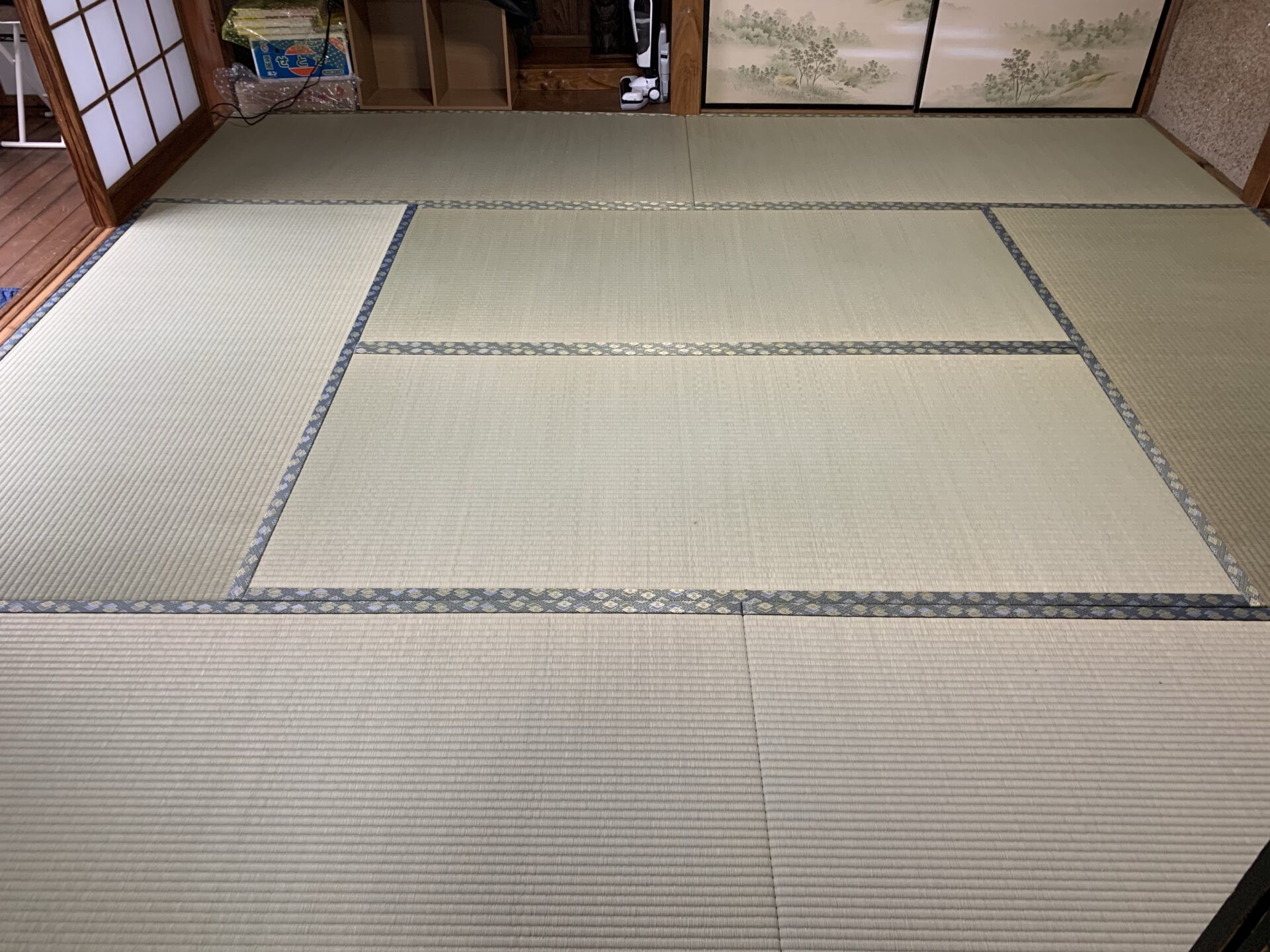Tatami mats are an indispensable part of traditional Japanese living spaces. Their pleasant scent and texture provide a calming and relaxing atmosphere. However, the characteristics, advantages, and disadvantages of tatami mats can greatly differ depending on the material of the tatami surface. The choice of material significantly affects the durability of the tatami, ease of maintenance, and most importantly, your lifestyle.
In this article, we will take a closer look at the three main materials used for tatami surfaces: natural rush, resin (made by Sekisui), and washi paper (made by Daiken). By understanding the characteristics, advantages, and disadvantages of each, we hope to assist you in choosing the tatami surface that best suits your lifestyle. Now, let’s delve into the details of each material.
Natural Rush Tatami Mats

Natural rush, or “igusa” in Japanese, is a traditional material used for tatami mats. It is harvested, dried, and woven into a surface cover for the mats. This natural material is known for its unique, fresh scent and its soft, comfortable texture.
Advantages
- Air Purification: Natural rush tatami mats have a humidity control effect, absorbing moisture from the room and helping to purify the air.
- Comfortable Texture: The mats provide a soft and pleasant touch, adding to the comfort of your living space.
- Relaxing Scent: The unique scent of igusa is known to have a relaxing effect.
Disadvantages
- Color Changes Over Time: Initially, natural rush tatami mats exhibit a beautiful green color characteristic of igusa. However, this color does not last forever and gradually changes over time. Direct sunlight can accelerate this discoloration process.
It’s important to note that this color change is not necessarily a disadvantage. The mat turns into a shade often referred to as “golden,” which is also appreciated for its distinct aesthetic appeal. - Prone to Stains and Spills: Natural rush tatami mats can easily get stained in high humidity environments. Additionally, spills from drinks or other liquids can also cause stains on these mats.
- Vulnerable to Mold and Dust Mites: As a natural plant material, if not cleaned regularly, these mats can easily become a breeding ground for mold and dust mites.
Usage and Application
Natural rush tatami mats are ideal for those who prefer a traditional Japanese aesthetic and enjoy the natural scent of igusa. They are often used in rooms for relaxation, such as bedrooms and living rooms. However, they may not be suitable for rooms with high humidity or direct sunlight exposure.
Resin and Washi Paper Tatami Mats: Sekisui and Daiken

Resin (made by Sekisui) and washi paper (made by Daiken) tatami mats are newer types of tatami surfaces that offer different characteristics from natural rush mats. These are manufactured as industrial products and are more durable and easier to maintain compared to natural rush tatami mats.
Advantages
- High Durability: These tatami mats are more durable and long-lasting compared to natural rush mats.
- Resistant to Stains: They have water-repellent properties, making them less likely to stain from spilled drinks and less prone to mold and dust mites.
- Less Discoloration from Sunlight: These mats are less likely to discolor or fade from sunlight, maintaining their color for a longer period.
Disadvantages
- Different Look and Feel from Natural Mats: These mats have a different look and feel compared to natural rush mats. In particular, washi paper mats do not have the same scent as natural rush mats.
- Long-term Use May Show Stains: Over time, stains may become more noticeable on these mats.
Usage and Application
These tatami mats are suitable for areas where durability and ease of maintenance are required, such as living rooms that are frequently used, children’s rooms, or households with pets. Additionally, they offer a wide variety of colors and designs, providing more options for interior decoration.
Conclusion
The choice of tatami mat material depends on your lifestyle and needs. Natural rush tatami mats allow you to enjoy the traditional Japanese atmosphere with their unique scent and soft texture. However, you need to consider issues such as discoloration from sunlight, stains from humidity, and the presence of dust mites.
On the other hand, resin and washi paper tatami mats are durable and easy to maintain, making them suitable for rooms that are frequently used or households with pets. They also offer a wider range of color and design options, giving you more freedom in terms of interior decoration.
Understanding the characteristics of each type and choosing the tatami mat that best suits your lifestyle and needs is crucial. We hope this guide will be helpful in your tatami mat selection.


